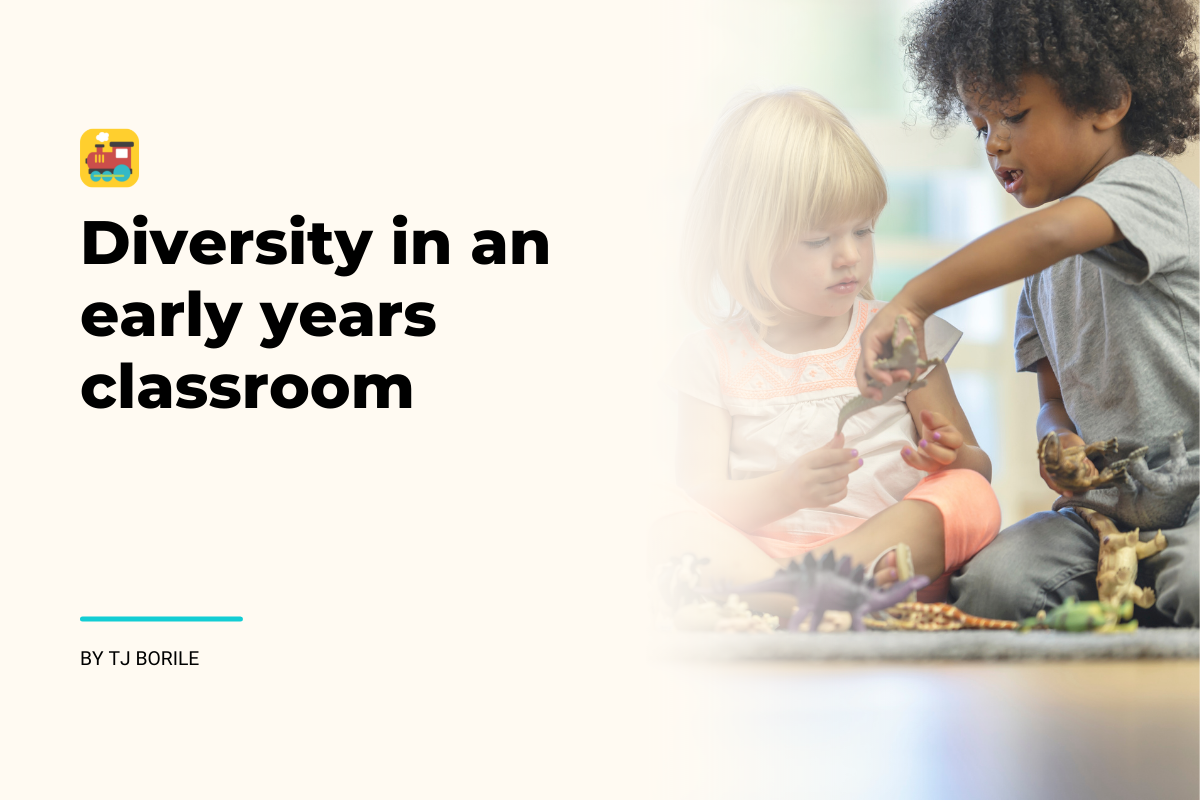It used to be an accolade to be considered a “melting pot” or a “mosaic” when it comes to cultural diversity. However, it is now recognized that instead of a unified and singular cultural expression, there is more value in highlighting individual cultures in authentic ways. As globalization continues, more and more nations are becoming increasingly multi-cultural, and a natural diversity has developed within their social structures. Diversity is a strength and should be celebrated and amplified as much as possible.
With regard to an early years classroom, acknowledging diversity – especially that of culture and race – is vital because children as early as the toddler stage have already formed unintentional racial biases. This is largely influenced by their home and learning environments, as well as the words and actions of the adults in their lives. We used to value being “color blind” as a response to cultural diversity, and we now know that this has detrimental effects. Perpetuating this culture of “color blindness” keeps us from recognizing important differences in one another. So keep your early years classroom as diverse and colorful as possible by celebrating and magnifying the things that make us different.
Natural diversity in the classroom
As educators, we sometimes have a tendency of treating diversity as something that needs to be actioned. For example, the menorahs come out during Hanukkah, or paper lanterns are created in the art curriculum during Lunar New Year. And that’s okay. These are perfectly acceptable strategies for celebrating the diverse cultures that surround us. However, they can also run the risk of being performative and can unintentionally treat diversity as something to tick off a checklist, as opposed to being a natural part of society’s fabric. So instead of looking toward external factors to incorporate diversity into your classroom, a good place to start is to look within it.
All about me activities are wonderful because they align so well with the preschoolers’ ego-centrism (that developmental stage where preschoolers love to talk about themselves). This curriculum will have concrete connections to the children in your group and will reveal elements that have direct importance to them. There’s the potential to learn about their home life (what they eat, what they celebrate) and as these activities are woven into your classroom, the organic and natural diversity of the group will automatically be revealed in a more meaningful way.
Increasing family involvement
We already know the value of incorporating families into our programming. It’s a thrill for children and adults alike to have a family member come into the classroom to lead a food experience or to read a story during circle time. In addition, it’s a wonderful way to highlight the natural diversity that we already have access to. So incorporate your families’ diverse backgrounds as ordinary parts of the children’s learning. For example, there’s no need to wait for National Indigenous People’s Day to have someone’s kôkhom come and make fry bread. To attain a natural diversity, these once “special” activities should be incorporated seamlessly, and on any given day.
Here are some cultural activities that your families can lead:
Examining our cultural biases
Everyone is a product of their culture, including ourselves as educators. Therefore our own cultural upbringing and biases may cause us to misinterpret the children’s words and actions. For example, in North America, shaking your head side to side in answer to a question indicates a negative response. However, in some countries, the same action means “yes”. Pointing at someone with an index finger may seem like an innocent gesture, but it is considered rude or threatening in some parts of the world. A deeper and more intimate knowledge of the diversity within the children in our care will help avoid culture-based misunderstandings.
This examination of cultural biases should also be applied to how we interact with families. When I was a child, my mom got invited to her first parent-teacher meeting, and I’ll never forget the fear and panic on her face. In her home country, these meetings were only conducted when there was a problem, so she never imagined that this common North American practice could be used with positive intentions. Parent-teacher communication itself may have some cultural gradations, so it’s important to have different ways to connect with families (face-to-face, communication folders, or digital communication). This will create a more inclusive environment, and with time, the gaps will lessen. A foundation of trust will be built so that everyone can communicate with more ease.
A diversity and inclusion team for your center
An organic diversity is nuanced and making it a part of our learning environment requires a dedicated focus. Diversity evolves as social trajectories change. Apart from culture-based ones, there is diversity in gender expression, neurological function, physical ability, and more. So consider creating a diversity and inclusion team for your center that functions like a health and safety inspection team. Certainly, there are already people within your organization who have a proclivity for diversity and inclusion. They can be tasked with ensuring that standards, both tangible and intangible, are being met.
Learning through diversity is already happening
Culture shapes and impacts who we are as individuals, and a core value of early childhood education is to treat each child individually. Whether we recognize it or not, educators are already upholding diversity through IEPs and individual learning plans. Diversification is already happening within our classrooms, so amplifying their cultural differences is a small yet meaningful step for the children in our care.
How are you teaching diversity in your classroom? Comment any tips below and you could be featured in a future article!



I really like activities where the students talk about their own culture, their lived experience, like you mentioned. I find it not only enlightening for the others students but it also allows kids to see that even though people may share the same culture, their experience of it can be different.